The Chandelier That Greets You
The V&A Rotunda Chandelier
Revised and updated in 2025
By Nadia Bouzid
You enter the Victoria and Albert Museum and look up. Before the exhibitions. Before you decide where to begin. There it is. Suspended under the dome. A chandelier that doesn’t sit quietly or behave like a fixture. It floats. It pulses. It waits.
It is made of hand-blown glass that coils and stretches and spirals in every direction. Sea green and lemon yellow. Indigo and pale blue. The tendrils twist like seaweed in motion or fire held in pause. There is no symmetry. No repetition. It does not follow rules. It builds its own rhythm.
The chandelier does not just fill the space. It claims it. It greets everyone who enters, not with formality, but with presence. Some people stop right away. Others walk under it without knowing what they are standing beneath. But once they look up, they feel it.
And more than feeling free, I feel invited.
Invited to carry my own thoughts through the museum. Invited to respond to whatever I am about to see with my own instincts. Whether it is a temporary exhibition or a centuries-old piece in the permanent collection, the chandelier sets the tone. It says there is room here for your perspective. It does not instruct. It offers permission.
Permission to feel.
Permission to not know.
Permission to experience something for the first time without explanation.
The chandelier was created by Dale Chihuly, the American artist whose name is now nearly synonymous with contemporary glass. While he studied traditional techniques early in his career, including a Fulbright in Venice where he observed the masters of Murano, his own work became something else entirely.
Venetian glassblowing is rooted in control. It is about discipline, precision, and repetition. It is about symmetry and tradition. Chihuly respected it, but he broke away from it. His forms became more organic. More unpredictable. He began working at a scale that few glass artists attempted. After a shoulder injury made it impossible for him to blow glass himself, he turned to drawing and directing. His studio became a team. His process became a collaboration. But the material always came first.
Glass moves. It resists. It remembers heat. When molten, it is alive. It demands focus. It requires timing. If you hesitate, it slumps. If you force it, it fractures. You have to work with it, not against it. That is what gives the chandelier its energy. You can still feel the motion that shaped each piece.
The sculpture was installed in the museum in 1999 and expanded in 2001. Over 1,300 individual pieces of blown glass were fitted together to form the installation. The ceiling had to be reinforced to carry the weight. Scaffolding was designed for cleaning. Even now, the piece needs regular maintenance by a trained conservation team. Visitors rarely notice this. They do not see the support above or the planning behind it. They just see the chandelier and feel something open.
I took these photos in 2017. The piece had already been in place for almost two decades. It is still there. Still suspended. Still bold and soft at the same time.
And every time I see it, I remember what it offers. Not just beauty, but permission. Not just form, but feeling.
It does not match the building. It challenges it. And somehow, that challenge becomes part of the welcome.
It reminds me that art does not need to belong to a place in order to hold it.
It just needs enough space. And enough care.
Original: September 25, 2017
📍Location: Victoria and Albert Museum, London
Neighborhood: South Kensington
Dimensions: 27 × 12 × 12 feet (8.2 × 3.7 × 3.7 m)
Material: Blown Glass
Type: Sculpture
The Rotunda Chandelier hangs at the entrance of the Victoria and Albert Museum of decorative arts and design.
The Ice Blue and Spring Green glass blown chandelier by American artist Dale Chihuly was installed in 1999. It was then altered in 2001 to make it bigger and better.
Date: 2017📍V+A Museum, London| Ice Blue and Spring Green Chandelier by Dale Chihuly photo by Nadia Bouzid
The Victoria and Albert Museum, nestled in the charming South Kensington neighborhood of London, is renowned for its collection of decorative arts and design. Among its many treasures, there's one remarkable piece that captures the attention of all who enter – the V&A Rotunda Chandelier, a stunning glass sculpture by American artist Dale Chihuly.
The Rotunda Chandelier makes a beautiful contrast with the Victoria & Albert’s museum architecture.
A Work of Art Meets a Source of Light
The Rotunda Chandelier, also known as the Ice Blue and Spring Green Chandelier, was originally installed in 1999 but underwent significant alterations in 2001, making it bigger and even more captivating. This magnificent piece is not your typical lighting fixture; it's a sculpture that graces the entrance of the Victoria and Albert Museum.
The Artistry Behind the Chandelier
Dale Chihuly, a renowned American glass artist, is the mastermind behind this exceptional chandelier. His artistry is celebrated for its vibrant colors, intricate glass forms, and dramatic installations. The Chihuly chandeliers are no exception and have become iconic representations of his craft.
Did you know?
The rotunda chandelier is not really a lighting fixture, but a sculpture
Date: 2017 📍V+A Museum, London| Ice Blue and Spring Green Chandelier by Dale Chihuly photo by Nadia Bouzid
Date: 2017📍V+A Museum, London| Ice Blue and Spring Green Chandelier by Dale Chihuly photo by Nadia Bouzid
The Chandelier's Features
The V&A Rotunda Chandelier measures an impressive 27 feet in length, comprised of 1,300 blue and green glass elements. Its creation was a meticulous process that took five days to assemble. This masterpiece is part of Chihuly's 'Chandelier' series, which began in 1992.
The Technique and Installation
Technically, the chandelier is a hanging sculpture, a concept Chihuly has favored throughout his career. His technique allows the glass to naturally shape itself, resulting in pieces that communicate a range of aesthetic experiences.
The massive size of the chandelier and the delicate nature of the glass necessitated special accommodations by the museum. The ceiling had to be reinforced before installation, and cleaning the chandelier requires meticulous care. Each piece of glass is cleaned individually by a technician on a raised platform, a process that takes several days and must be completed before the museum opens.
The Victoria & Albert museum houses a permanent collection of over 2.3 million objects that span over 5,000 years of human creativity. Making it one of the world’s leading museums of art and design.
The Rotunda Chandelier is now part of the Victoria + Albert ‘s permanent collection.
THE MUSEUM COURTYARD |📍V+A Museum, London | photo by Nadia Bouzid
📍Location: Victoria and Albert Museum, London | photo by Nadia Bouzid
The Museum holds some of the greatest resources for the study of architecture, furniture, fashion, textiles, photography, sculpture, painting, jewelry, glass, ceramics, book arts, Asian art and design, theatre and performance.
A Dazzling Duplicate in Singapore
If you're unable to make it to London, there's a treat waiting for you in Singapore. A duplicate of the 1999 version of the chandelier graces the entrance atrium of Scotts Square, a shopping center and residential complex. Like its counterpart in London, natural light shines down on the glass structure, creating a mesmerizing interplay of light and color.
The V&A Rotunda Chandelier is a testament to the union of art and design, showcasing the talent and creativity of Dale Chihuly. It's not just a source of light; it's a radiant masterpiece that enriches the ambiance of the Victoria and Albert Museum, making it a must-see for art and design enthusiasts.
Plan a visit to the Victoria and Albert Museum, and you'll be treated not only to a world-class collection but also to the breathtaking beauty of the Rotunda Chandelier. It's a testament to the artistry of Dale Chihuly and the enduring power of glass as a medium for artistic expression.
Temple of the Sun
Location: Paradise Island Bahamas
Artist: Dale Chihuly
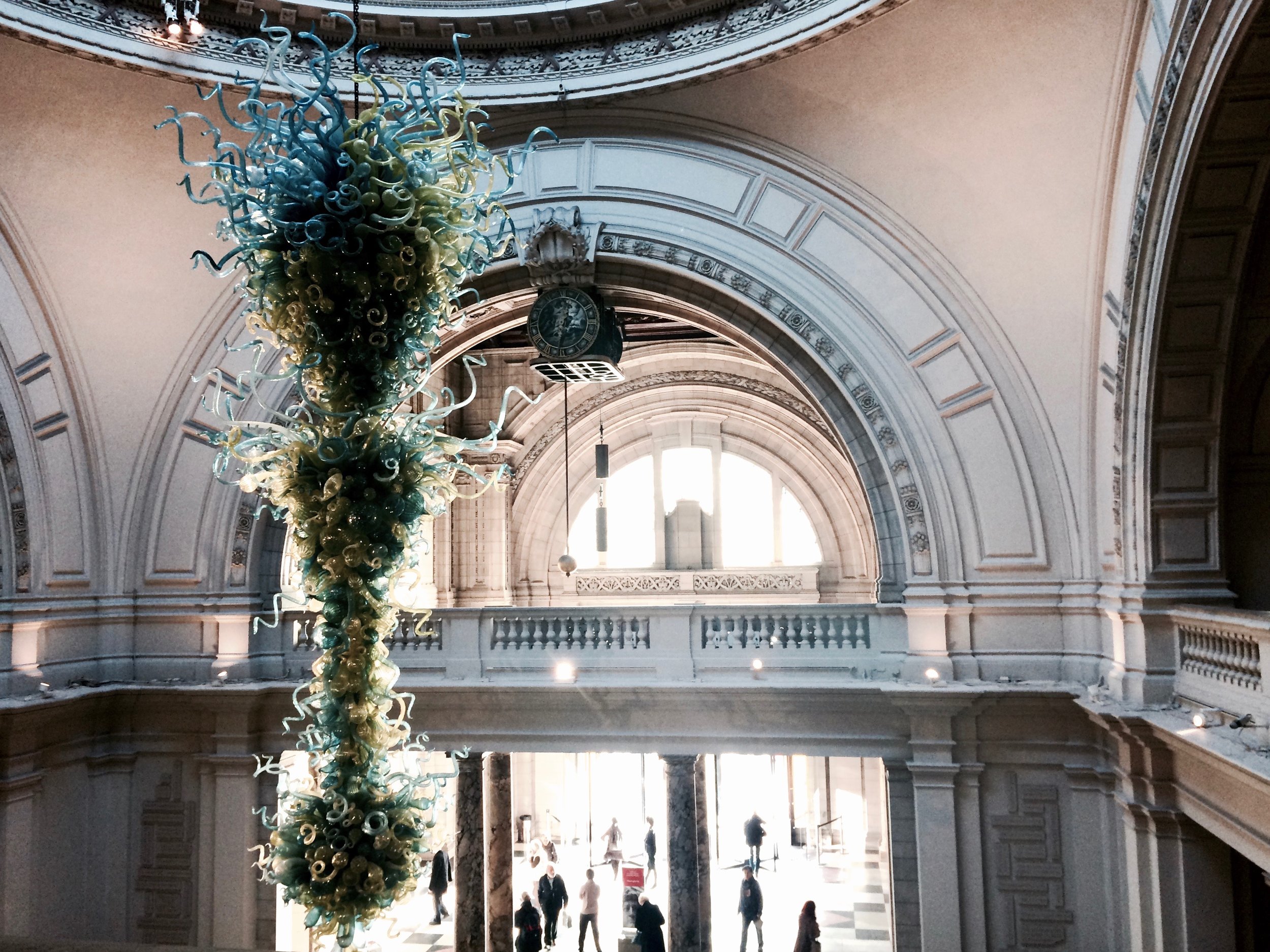

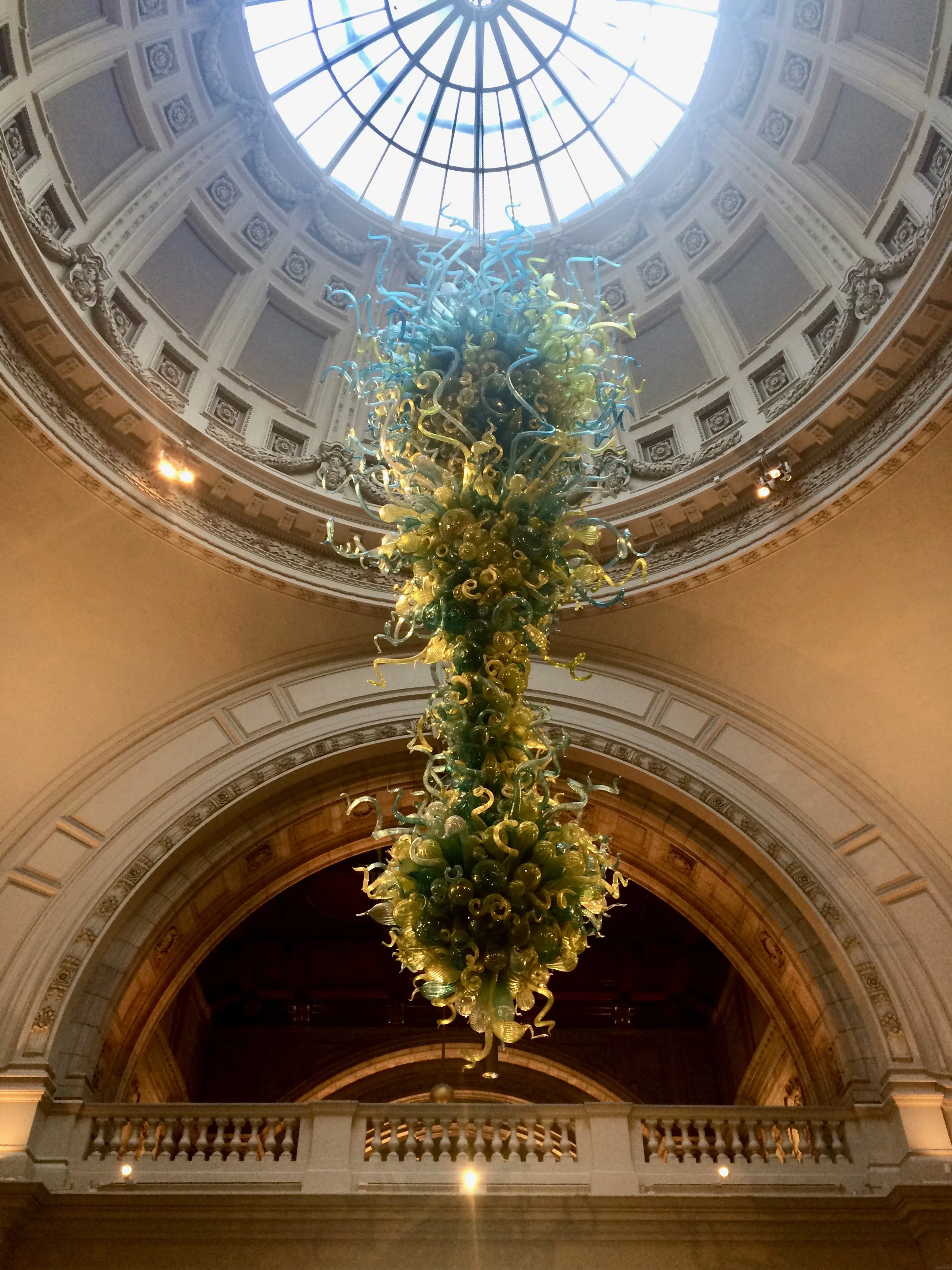
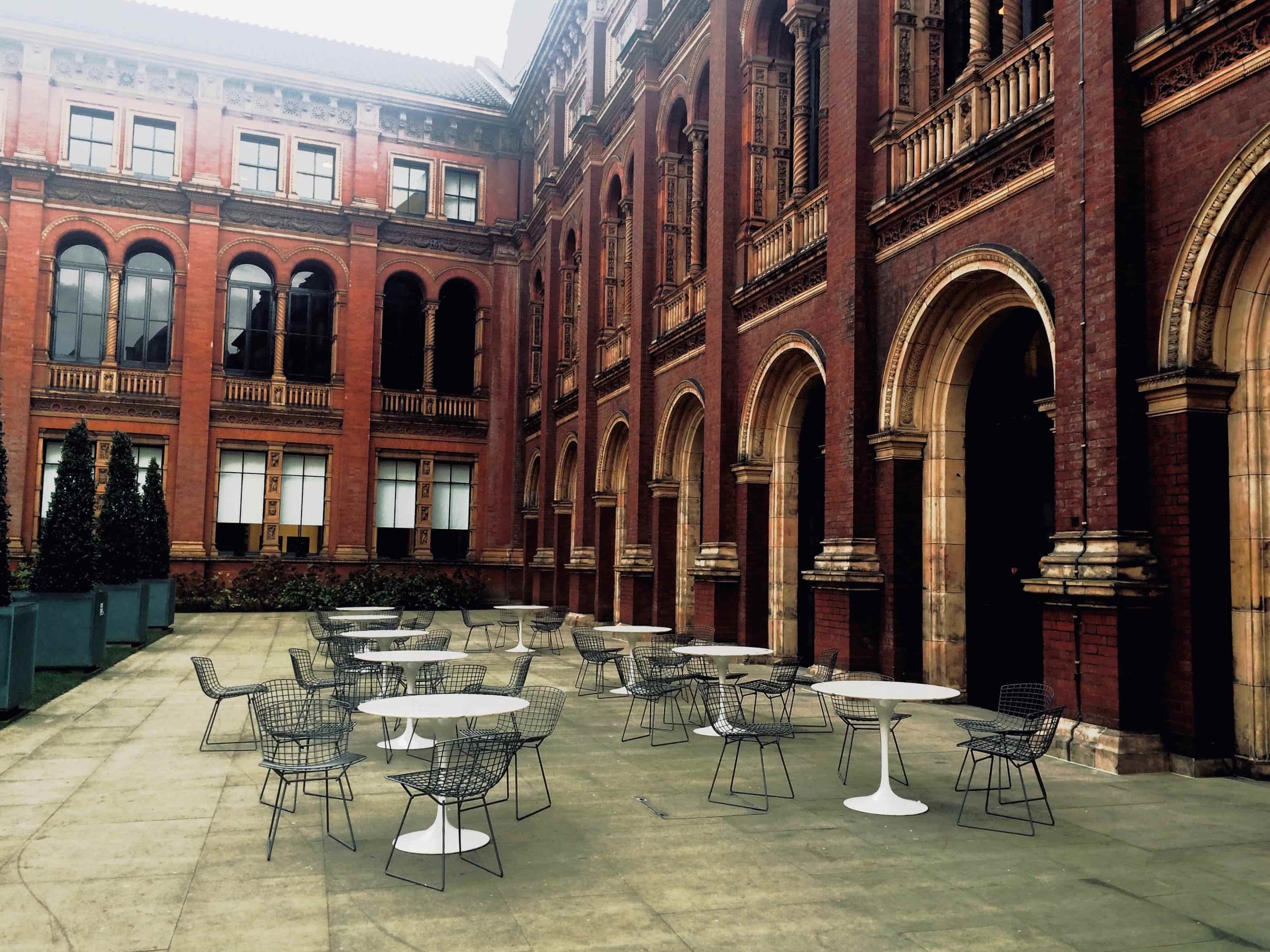

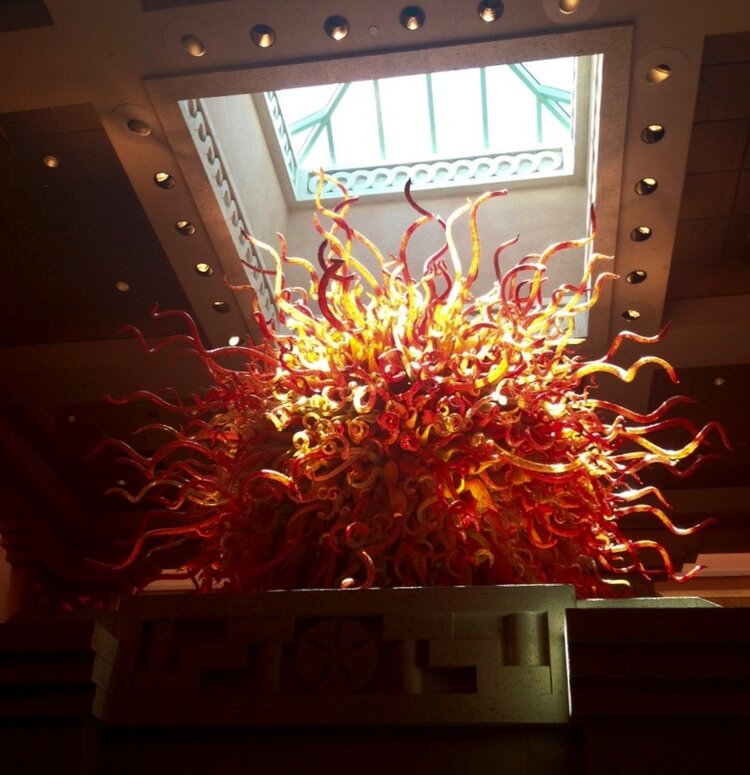



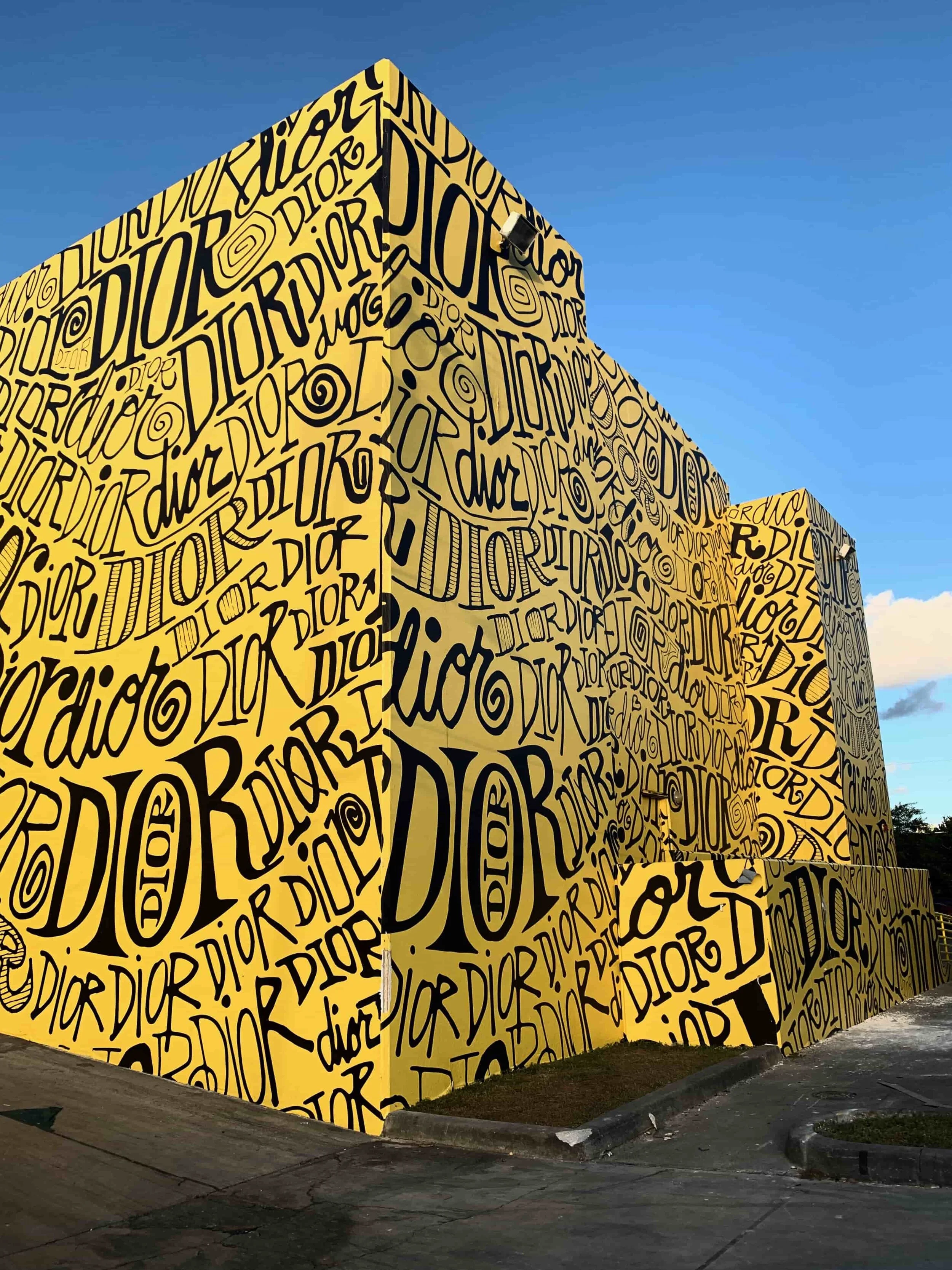
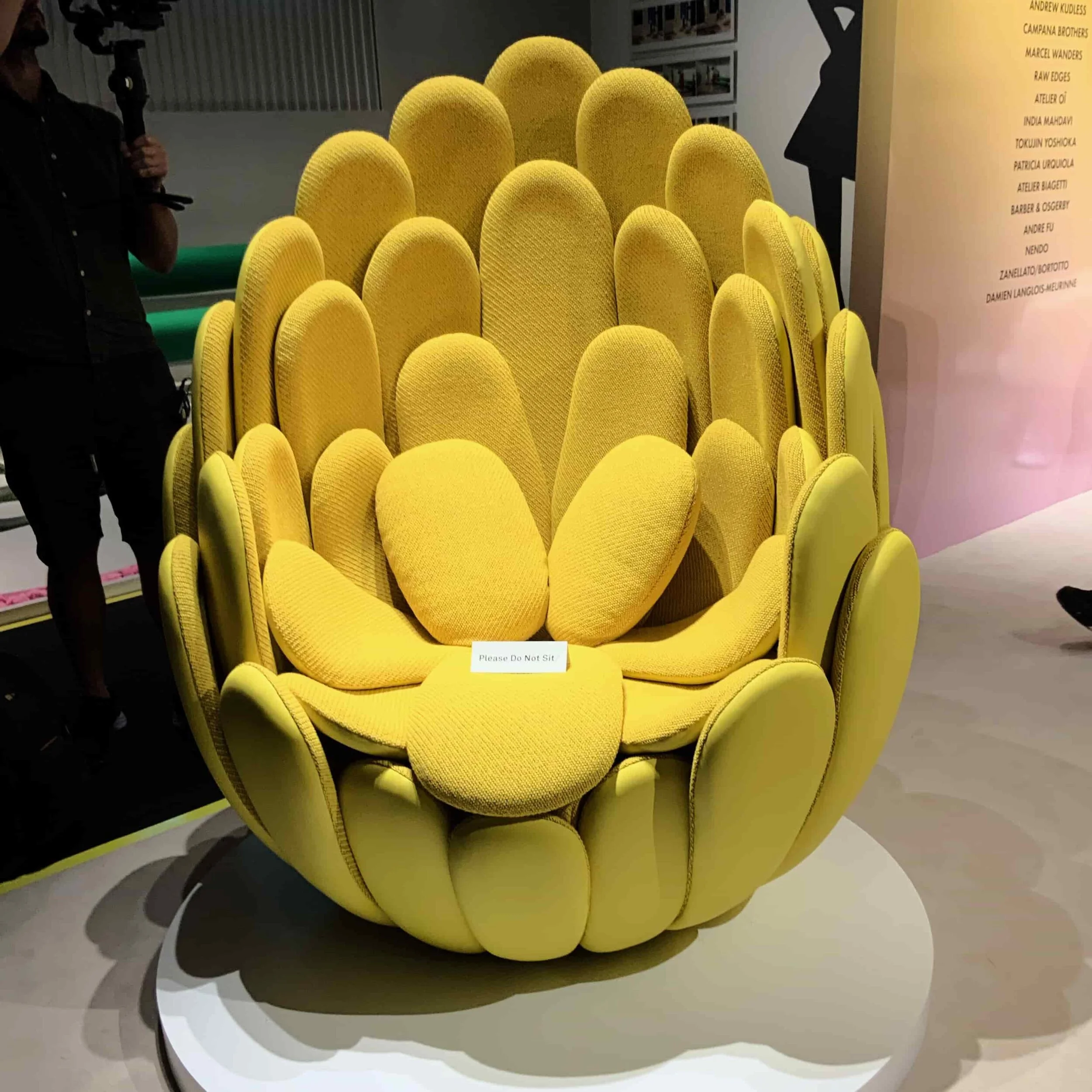
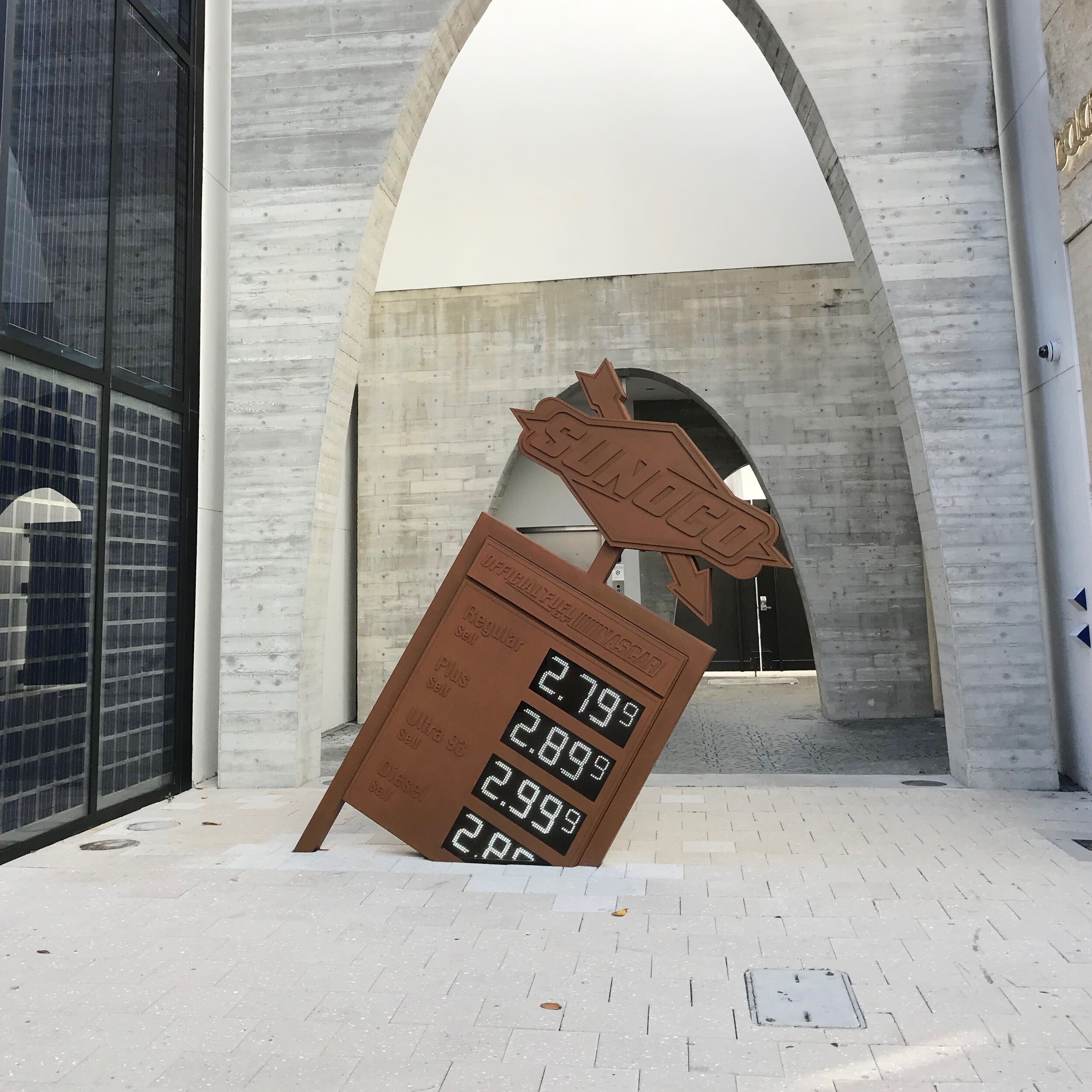




Suspended under the dome of London’s Victoria and Albert Museum, the chandelier by Dale Chihuly doesn’t just hang , it speaks. A story about glass, fire, and what happens when a museum makes space for something that challenges it